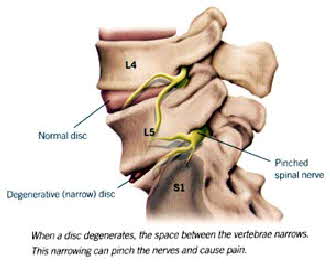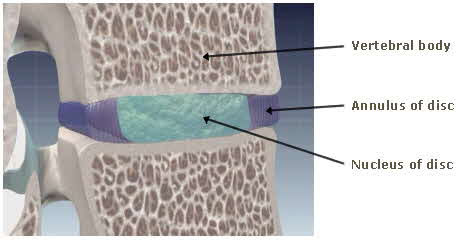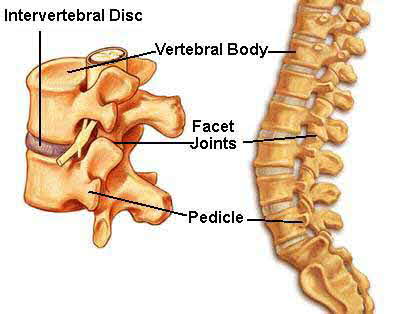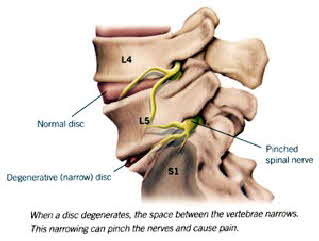|
LOW BACK DISCS GIVE MOST TROUBLE

Any of the spinal discs can be injured or undergo degeneration; but because of their location, discs in the lower spine are subjected to the greatest weight-bearing stress and are most likely to slip or be compressed.
Persons who do a lot of lifting are likely candidates for disc trouble because of the day-to-day stress upon the low back. Regardless of occupation, anyone may have weak, degenerated discs. Office workers, inveterate bridge players, and chronic TV watches are often affected since prolonged sitting is a primary cause of disc trouble.
WHAT CAN BE DONE?
Fortunately, 95% of all disc cases can be managed through modern chiropractic methods. Many years of research and experience in disc cases qualifies in acute and chronic disc problems.
CHIROPRACTIC CARE FOR DISC PROBLEMS
Specialized chiropractic techniques in disc care included:
1) Thorough chiropractic examination to determine extent and cause
2) Realigning the spinal column
3) Balancing the spine and pelvis
4) Eliminating fixations
5) Reducing vertebral Subluxation
6) Stimulating disc nutrition
7) Revitalizing ligaments and muscles
Chiropractic techniques may be employed in the management of particular disc problems.
Any person suffering from acute or chronic back pain should see a doctor of chiropractic to determine the cause and what should be done about it. Part of proper treatment is prevention of additional disc damage. A doctor of chiropractic knows DISC PROBLEMS and can help you.
WHAT IS A DISC?
There are 24 ring shaped spinal bones, called vertebrae, stacked one on top of the other. Lying between each pair of vertebrae are rounded, highly elastic cushions of jelly-like intervertebral discs. They consist of a jelly-like substance with a fibrous covering, and are surrounded by bands of ligaments, which attach to the vertebrae and serve both to hold them together and to keep them apart
.
The hollow centers of the vertebrae form a vertical shaft through which the delicate spinal cord threads like a rope, carrying nerve trunks to and from the brain. The discs help to form the openings through which nerves leave the spine and go to all parts of the body.
HOW THE DISC SERVES THE HUMAN BODY
Like a weight bearing column in the center of a building, the vertebrae and discs (spinal column) carry a large portion of the body’s weight. The weight naturally increases from the neck downward, so the vertebrae and discs gradually increase in size and strength from the neck to the lower back.
The discs allow the spinal column to bend and twist freely and painlessly with the changing position of the body. Without the discs, the bones of the spine would grind and grate on each other.
Discs act as chock absorbers when the spine undergoes a sudden change of movement, unusual pressure, or forceful jarring.
The discs also give us more than a foot of out height. As a person grows older, thinning discs make him appear to shrink.

WHAT IS A DEGENEREATED DISC?
Degeneration of the intervertebral disc, which is often called degenerative disc disease (DDD) or osteoarthritis of the spine, is a common disorder of the lower spine. Disc degeneration can lead to disorders such as spinal stenosis (narrowing of the spinal canal that houses the spinal cord and nerve roots; can be lumbar or cervical),spondylolisthesis (forward slippage of the disc and vertebra), and retrolisthesis (backward slippage of the disc and vertebra). Actually, DDD is not a disease but, rather, a degenerative condition that can be painful and can greatly affect your quality of life. Disc degeneration is a normal part of aging and is generally not a problem by itself. However, when bone spurs grow adjacent to the discs, they can pinch or put pressure on the nearby nerve roots or spinal canal, and pain can occur.

|